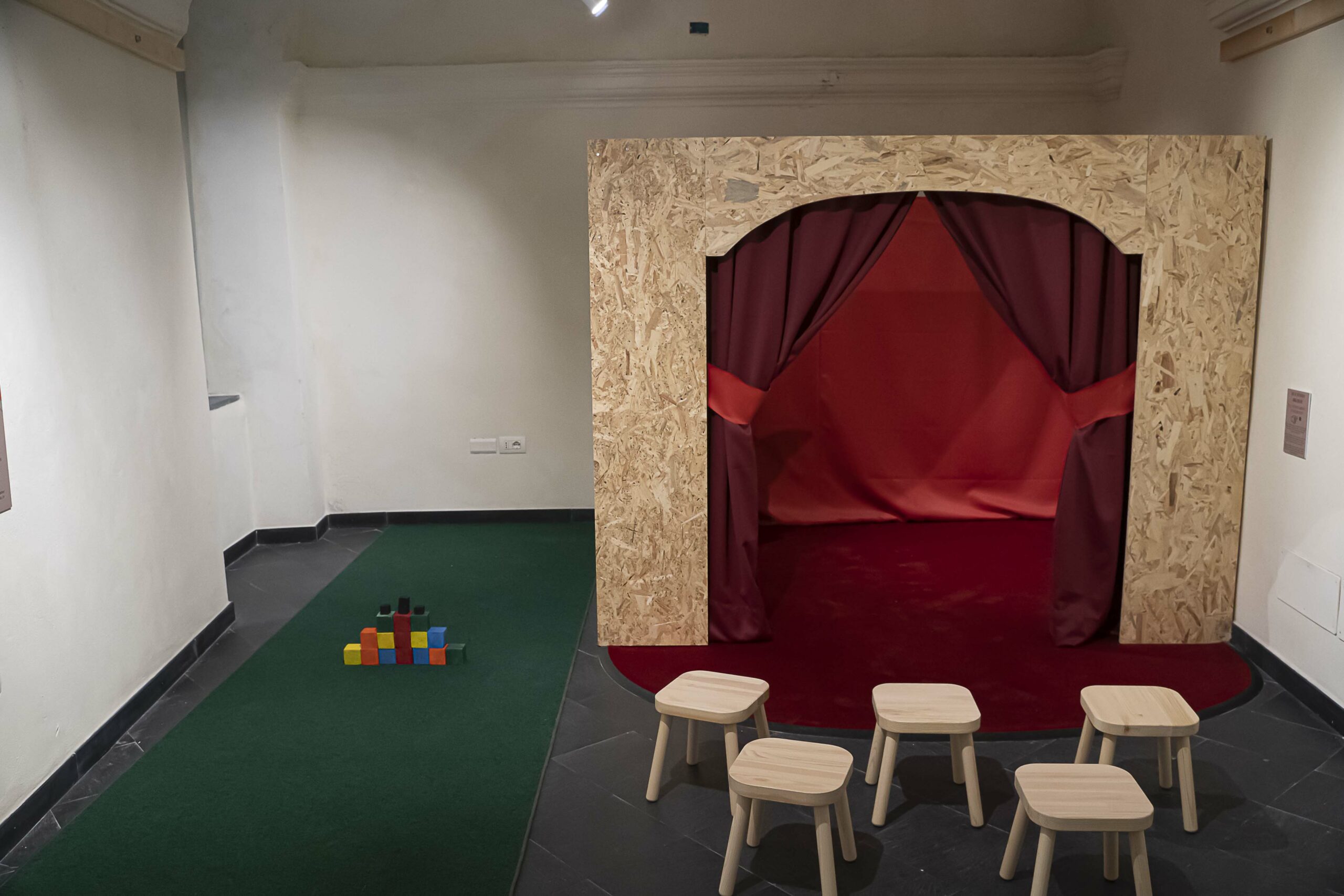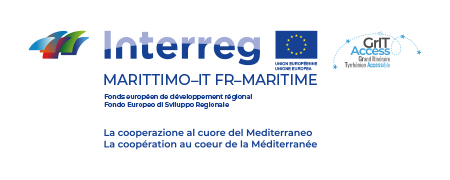Educational section
The exhibition aims to offer children and adults a fun, playful, but at the same time educational experience.
Parent/tutor’s role within the museum is fundamental : it is not a simple companion, but co-actor of the activities, together with the child.
All design is inclusive, designed with furniture and interactive spaces, simple and intuitive, easy to understand, regardless of experience, knowledge, language skills or the current level of user’s concentration.
The choice of easy and natural materials, the inclusion of many interactive spaces where to do concrete experiences and manipulations of objects and little technology. We are convinced that for visitors, above all for children, it’s better that a museum space remains the place where you can get in touch with the original without being dominated by a virtual world in which they are already abundantly immersed in everyday life.
Although designed for a childish audience, this setting is also stimulating for an adult: choose your own path and your own time, let yourself be fascinated by what you see with an open mind, get informed, play, sure that if a museum and a space are good for a child, they will be good for everyone.
Last but not least, the space becomes a possible place to get used by schools, a place where teachers can find innovative laboratories and useful tools for deepening scientific and historical issues.
Our educational rooms are:
Alchemist’s workshop
A succession of stations dedicated to chemistry and physics, in order to explain with science things that sometimes seem to be “magical”. Exhibit 1: wooden wheel to study the different density of fluids. Exhibit 2: case with scorpion, aragonite to explain fluorescence and phosphorescence. Exhibit 3: scale for weighing natural finds (pine cones, rocks etc…) Exhibit 4: Colour palette and spectrophotometry allow us to talk about primary and complementary colours, moreover children will be able to use spectrophotometers to “decompose” the light of a LED lamp. Exhibit 5: Electromagnetism: inside a box with a glass some paper shapes will be inserted, the children will have to rub a cloth on the glass and create an electromagnetic field that will make the shapes move.

Naturalist’s cabin
Exhibit 1: “FINGERPRINTS” Table with sand and wooden molds attached to a chain with animal footprints. Exhibit 2: “THE SHED” Station with binoculars that can be used to observe the other side of the room, where there is a wooden reconstruction. Exhibit 3 : “ENTOMOLOGY CORNER” Insects and spiders are the protagonists of this space : an entomological box where children can observe through a magnifying lens the diversity between the orders of insects. In addition, children will have 3 sets of wooden insects divided into pieces (body, legs, antennae, wings etc…) to be reassembled in the correct way, inspired by the insects observed in the entomological box. Exhibit 4: “MAMMALS CORNER” Space dedicated to the most representative mammals of the area. On the wall you can touch antlers, horns and furs (previously treated by ADM). The finds will be procured by ADM.Naturalist’s cabin
Exhibit 1: “FINGERPRINTS” Table with sand and wooden molds attached to a chain with animal footprints. Exhibit 2: “THE SHED” Station with binoculars that can be used to observe the other side of the room, where there is a wooden reconstruction. Exhibit 3 : “ENTOMOLOGY CORNER” Insects and spiders are the protagonists of this space : an entomological box where children can observe through a magnifying lens the diversity between the orders of insects. In addition, children will have 3 sets of wooden insects divided into pieces (body, legs, antennae, wings etc…) to be reassembled in the correct way, inspired by the insects observed in the entomological box. Exhibit 4: “MAMMALS CORNER” Space dedicated to the most representative mammals of the area. On the wall you can touch antlers, horns and furs (previously treated by ADM). The finds will be procured by ADM.
History
Area 1 . “THEATRE OF THE PAST” In this area children can try on clothes and accessories from the past, identifying themselves with typical characters of the mediaeval Triora; the baker, the witch, the shepherd, the farmer, the chimney sweep etc.… A small area set up as a stage will be the place where children can invent their own stories. There will be “scripts” that will guide the children in the representation of the characters. Area 2 . “THE GAMES OF A TIME GONE” Place dedicated to traditional games of the mediaeval period and of the area : the “square bowls”.
The exhibition project was curated and carried out by Associazione Didattica Museale
